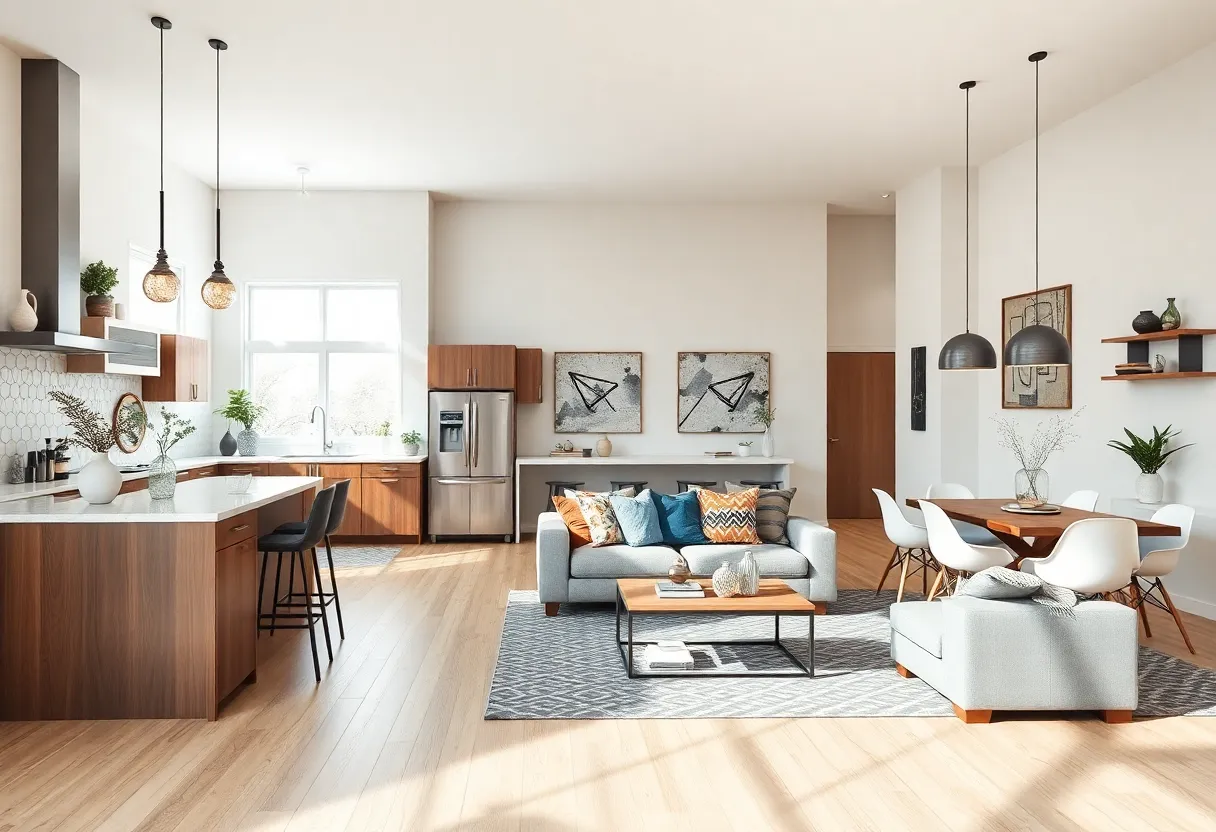How to Embrace Open Concept Living: Design Tips for Your Renovation
Understanding the Appeal of Open Concept Spaces
Open concept living has gained significant popularity in recent years, driven by a desire for more flexible, social, and visually spacious homes. This design approach reduces traditional walls and barriers, creating a seamless flow between kitchens, living rooms, and dining areas. The broader sense of connectivity encourages social interaction, facilitates accessibility, and maximizes natural light.
Adopting an open layout enhances the perception of space, making smaller areas seem larger and more welcoming. It also fosters a versatile environment where furniture arrangement, decor, and functionality can evolve over time.
Planning the Renovation: Key Considerations
Assess Your Home’s Structural Elements
Before removing walls or making significant modifications, evaluate which structures are load-bearing. Removing essential support beams without proper reinforcement can compromise safety and stability. Engage a structural engineer or a licensed contractor to identify load-bearing components and explore viable alternatives like hidden supports or beam installation.
Determine Your Functional Zones
While openness benefits visual flow, clearly defining specific zones remains crucial. Use furniture placement, rugs, or furniture groupings to subtly demarcate areas such as cooking, dining, and lounging, maintaining functionality without sacrificing continuity.
Maximize Natural Light and Ventilation
An open plan allows for enhanced light distribution. Consider window placement, skylights, and glass doors to admit more daylight. Cross-ventilation becomes easier, improving air quality and reducing reliance on artificial cooling systems. Placement of open shelving and reflective surfaces amplify natural illumination throughout the space.
Design Tips for Embracing Open Concept Living
Choose a Cohesive Color Palette
Color coherence plays a fundamental role in creating a unified appearance. Use a consistent color scheme across all zones—muted neutrals, soft pastels, or bold accents—to tie spaces together visually. Lighter hues brighten the area, while subtle contrasting accents add depth.
Opt for Multi-Functional Furniture
In open layouts, space efficiency is paramount. Incorporate furniture that serves multiple purposes—such as extendable dining tables, storage benches, or sofa beds. This reduces clutter and increases flexibility for various activities.
Implement Visual Boundaries Creatively
While walls are minimized, subtle boundaries help delineate zones without interrupting flow. Use partial walls, open shelving, or different flooring materials to define dining and living areas without compromising openness.
Prioritize Consistent Flooring
Using the same flooring throughout the area unifies multiple spaces, promotes a sense of flow, and makes transitions seamless. Engineered hardwood, large-format tiles, or polished concrete are popular choices for a cohesive look.
Utilize Lighting Strategically
Layered lighting enhances openness and ambiance. Combine overhead fixtures with task lighting and accent lights to create well-lit zones. Pendant lights over kitchen islands, recessed lighting in living spaces, and wall sconces contribute to an inviting atmosphere.
Add Modular and Flexible Storage Solutions
Integrated storage options prevent clutter from compromising the clarity of open spaces. Invisible cabinetry, wall-mounted shelves, and built-ins maintain order while preserving visual openness.
Addressing Acoustic Challenges
Open layouts can amplify sound transmission, leading to potential noise disturbances. Incorporate acoustic solutions such as sound-absorbing panels, plush area rugs, and upholstered furniture to mitigate echoes and maintain a comfortable noise level.
Soundproofing Adjacent Rooms
If certain areas require privacy, consider installing soundproof doors or partitions. These solutions preserve the benefits of openness while allowing confidential or quieter zones as needed.
Ensuring Privacy in an Open Space
Design elements can introduce privacy without walls. Use semi-private screens, sliding doors, or fabric curtains to provide enclosure when necessary, especially for bedrooms or home offices.
Furniture arrangement can also create visual barriers—tall bookcases or plants act as natural dividers, offering separation while maintaining an open feel.
Harmonizing Style and Functionality
Maintain Design Consistency
Adopt a unified style that spans all zones—whether modern, rustic, or minimalist—to reinforce a cohesive aesthetic. Consistency in furniture, fixtures, and decor ensures that spaces flow naturally, enhancing overall harmony.
Select Durable and Easy-Care Materials
In open areas subject to frequent use and movement, opt for surfaces and fabrics that are resilient and low-maintenance. Quartz countertops, stain-resistant upholstery, and scratch-proof flooring prolong the home’s visual appeal and functionality.
Integrating Smart Home Technology
Smart lighting, thermostats, and home automation integrate seamlessly into open-concept designs. These technologies offer customized control, energy efficiency, and convenience across expansive spaces. Automated blinds or app-controlled lighting can adapt the ambiance to different activities or times of day.
Final Thoughts on Embracing Open Concept Living
Transitioning to an open concept layout requires careful planning and thoughtful design choices. The emphasis should be on creating a versatile, harmonious space that balances openness with functionality and comfort. Proper structural assessment, strategic zoning, cohesive aesthetics, and innovative solutions combine to craft a home that embodies both style and practicality.
Renovating to open concept living not only enhances daily experiences but also elevates the overall value of the property. Embrace the potential of an integrated home environment, and transform your space into a flexible, welcoming haven tailored to your lifestyle.
Author: STAFF HERE NEW YORK WRITER
The NEW YORK STAFF WRITER represents the experienced team at HERENewYork.com, your go-to source for actionable local news and information in New York, the five boroughs, and beyond. Specializing in "news you can use," we cover essential topics like product reviews for personal and business needs, local business directories, politics, real estate trends, neighborhood insights, and state news affecting the area—with deep expertise drawn from years of dedicated reporting and strong community input, including local press releases and business updates. We deliver top reporting on high-value events such as New York Fashion Week, Macy's Thanksgiving Day Parade, and Tribeca Film Festival. Our coverage extends to key organizations like the Greater New York Chamber of Commerce and United Way of New York, plus leading businesses in finance and media that power the local economy such as JPMorgan Chase, Goldman Sachs, and Bloomberg. As part of the broader HERE network, including HEREBuffalo.com, we provide comprehensive, credible insights into New York's dynamic landscape.





